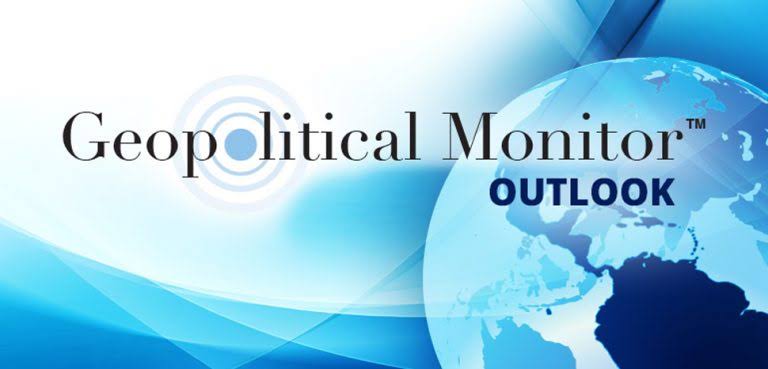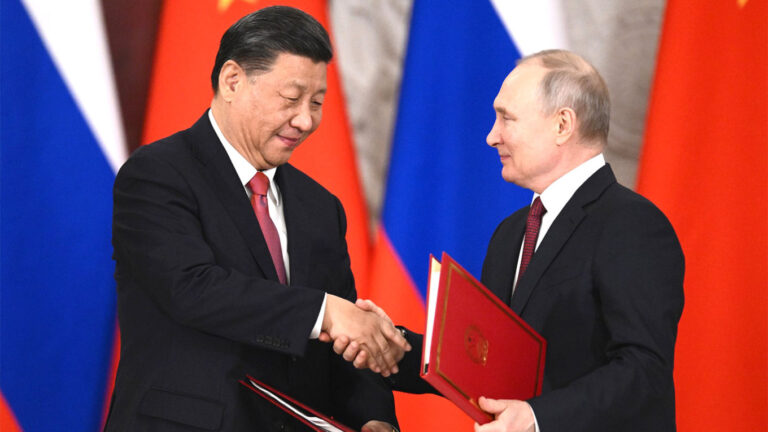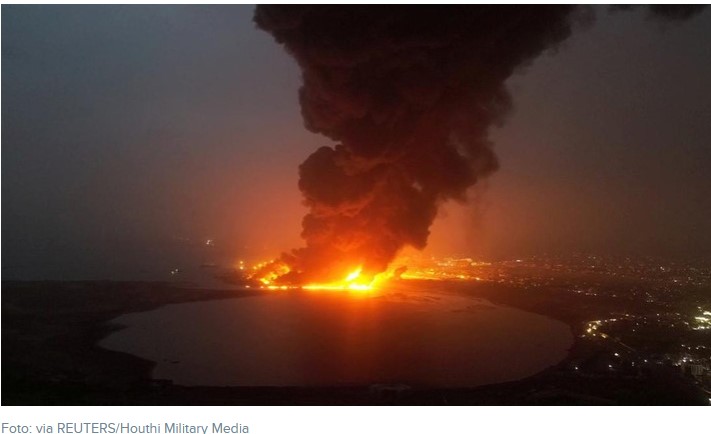
SYRATEGIC ASSESSMENT –In both 2020 and 2021, the beginning of each year started with a major event that reverberated around the world. In early January 2020, the United States killed Islamic Revolutionary Guard Corps (IRGC) commander Qassem Soleimani, escalating an ongoing tit-for-tat between Washington and Tehran. In early January 2021, insurrectionists stormed the US Capitol in an attempt to overthrow the government and usurp American democracy. As 2022 begins, it is imperative to think about what geopolitical trends could have the most significant impact on global security, and how violent extremists could try to dangerously capitalize on this moment of attention as the year begins. Many of these trends will be impacted by the ongoing COVID-19 pandemic, which continues to wreak havoc heading into its third year.
Nation-States Matter
After twenty years of fighting the Global War on Terrorism, the pendulum has swung away from violent non-state actors back to nation-states, with a political focus on counterterrorism being replaced by a pivot to great power competition. Inter-state wars threaten to destabilize entire regions.
Among the most serious concerns in 2022 are conflicts involving states; continued Russian hybrid warfare in Ukraine and the ongoing shadow war between Iran and Israel both have the potential to escalate further in 2022, with the possibility of enveloping surrounding countries in the region or allies of the countries involved. Many of the most worrisome conflicts are multidimensional and could involve fighting across numerous domains—land, maritime, cyberspance and also challenge traditional conceptions of warfare. Jihadist groups linked to Pakistan and emboldened by the Taliban’s victory in Afghanistan could seek to target India, bringing Islamabad and New Delhi to the precipice of war, as occurred following the November 2008 Mumbai attacks by Lashkar-e-Taiba.
2022 could also be characterized by continued confrontation between the world’s two major powers, the United States and China, as Washington and Beijing continue to compete for influence and frequently trade barbs over a litany of grievances, some of which could lead to increased tensions this year.
Intensification of Civil Wars
With the looming threat of inter-state conflict, concerns stemming from intra-state conflict also abound. A civil war in Ethiopia threatens to destabilize East Africa, with dire humanitarian implications. There have been accusations of war crimes by each side against the other, including massacres, rapes, and wanton violence targeting civilians.
In Afghanistan, the Taliban-led government is struggling to contain a growing insurgency from Islamic State Khorasan (IS-K), while millions of Afghans are facing a humanitarian crisis spurred by food insecurity and a collapsing economy. IS-K could develop the capability to launch external operations beyond Afghanistan’s borders, while groups like al-Qaeda are also going to benefit from ongoing conflict throughout South Asia. The war in Yemen has reached a stalemate, with no clear end in sight. Houthi rebels backed by Iran continue to display sophisticated capabilities, while the Saudi-backed war effort has exacerbated the situation, worsening an already dire humanitarian crisis for the people of Yemen.
Elections in Libya, scheduled for late December, were postponed, raising fears that the country could return precipitously to civil war, with the respective sides convinced of the futility of political negotiations. Other potential hotspots in 2022 include Somalia, Myanmar, and Nagorno-Karabakh. Turkey will continue to sell drones to the highest bidder, as demand for Turkish-supplied weaponry spikes, seen as a difference maker in several ongoing conflicts.
Africa as the Epicenter of Jihad
While the global jihadist movement undoubtedly received a major boost from the Taliban takeover of Afghanistan, 2022 will feature an even greater focus on Africa as the epicenter of jihadist terrorism.
In West Africa, Islamic State West Africa Province (ISWAP) and several al-Qaeda-linked groups have increased their operational tempo of attacks in Nigeria and Mali. Jihadist activity spread in 2021 and will continue to do so this year, impacting countries such as Togo, Benin, Ghana, Senegal, Ivory Coast, Cameroon, Niger, and Burkina Faso, among others. The Islamic State continues to evolve in Central Africa as well, through its ISCAP affiliates, as each gains strength in the Democratic Republic of Congo (DRC) and Mozambique, respectively. In the Horn of Africa, al Shabaab has refined both its operational and organizational capabilities, posing a direct threat to Somalia’s embattled government.
There is growing concern that al-Shabaab could evolve into a viable transnational threat, with the intent and capabilities to target Western interests in the region, but also beyond.
Malicious Cyber Activity
A combination of cybercriminal endeavors sponsored by states and perpetuated by non-state actors is a trend most expect to see continue, if not accelerate, this year. During the first half of 2021, the U.S. Department of the Treasury’s Financial Crimes and Enforcement Network (FinCEN) reported that approximately $100 million a month of ransomware transactions were processed.
Many of the payments associated with recent ransomware attacks have been made in Bitcoin routed to the coffers of Russia-based hackers. In 2021, the U.S. government sanctioned Maksim Yakubets for his actions related to a cybercrime operation dubbed “Evil Corps.” These types of responses are likely to continue as the Russians and Americans snipe at each other from their terminals.
At the end of 2021, a major cyber vulnerability (known as Log4J, in open-source code) was identified as a serious threat by cybersecurity experts, although some major firms have provided patches in an attempt to mitigate the damage.
Still, on December 29, the cyber firm Crowdstrike noted that a state-sponsored attack by China using an Log4J-linked exploit was likely the culprit targeting a large academic institution.
The early half of 2022 will be marred by continued efforts by state-linked groups and independent hackers seeking to exploit Log4J for nefarious purposes.
This, coupled with the continued use of ransomware and other tactics like Business Email-Compromise, will continue to cause major issues for states and multinational corporations alike.
More Sophisticated Disinformation Campaigns
With high-profile events such as the 2022 U.S. mid-term elections, disinformation campaigns will continue apace and progress in sophistication. China could even surpass Russia as the most effective online provocateur, continuing a trend identified last year.
The New York Times recently outlined how the Shanghai Police Department conducted an operation where it contracted out disinformation operations over major social media platforms like Twitter and Facebook to stoke division and dissent.
Moving into 2022, the United States should anticipate that both China and the Russian Federation will continue to leverage a wide array of state-borne and third-party tools to exacerbate schisms within the American polity.
In particular, the U.S. midterm elections slated for the fall of 2022 will present the Chinese and Russians the perfect opportunity to amplify disinformation perpetuated by leading American political conspiracy theorists such as Marjorie Taylor Green, Lauren Boebert, and Paul Gosar.
Rather than creating disinformation content on their own, troll armies associated with state actors can simply echo, retweet, and “like” at scale the false narratives peddled by U.S. political figures.
As this escalates throughout 2022, the tensions that manifest will make it more difficult for the United States to counter other activities that may threaten its national security interests.
Election interference through disinformation, however, will not just impact the United States. For instance, the looming French election in the summer of 2022 will also figure heavily in disinformation-lodged attacks. The Kremlin has long meddled in French elections, and it is highly likely that Russian actors will attempt to do so again (TSC).








